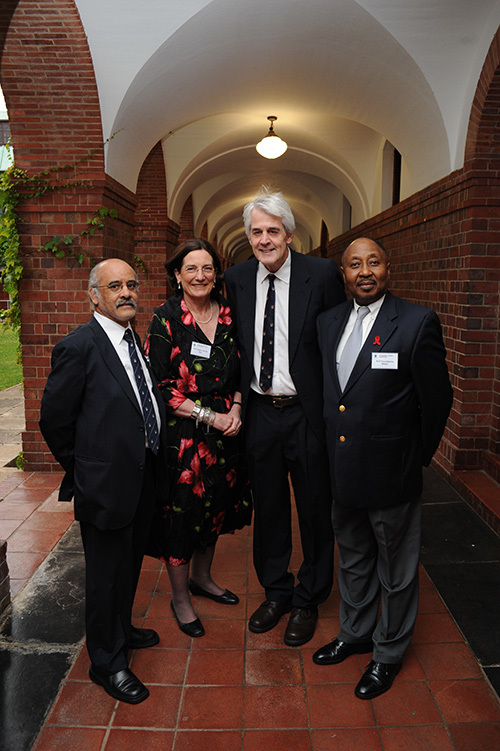Medical teachers grab 2010 awards
15 December 2010
Professor Roland Eastman and Professor Zephne van der Spuy, both of the Faculty of Health Sciences, have been named the recipients of UCT’s 2010 Distinguished Teacher Awards.
So (as both indicated) their experiences of teaching are perhaps unlike those of most others at the university - no large lecture halls crammed with students, for one. Rather, most of their teaching is done in small groups while doing rounds in hospital wards, cheek by jowl with students and patients.
Van der Spuy, head of postgraduate education in the Department of Obstetrics and Gynaecology, describes teaching as one of the 'legs' of the three-legged stool of medical training, going hand in hand with clinical work and research. "It is said that the best care of a patient comes through teaching, because as you teach you review and criticise, and so your treatment of the patient improves," she says.
Those sentiments are echoed by Eastman, head of the Division of Neurology, when he speaks of 'setting the tone' and acting as a role model for students. "A large part of the work is clinical bedside teaching of the students - that's where a lot of the real learning is done, and that's the only way to teach people to be doctors," he says.
In medicine, the two agree, teaching, clinical work and research are inseparable - as deputy vice-chancellor Professor Thandabantu Nhlapo also highlighted in his toast at the Annual Distinguished Teachers Dinner on 1 December.
"While tonight's award recipients have excelled in particular ways, they both show that teaching and research are not mutually exclusive; they must run in parallel in the university environment," said Nhlapo.
He also noted that the two both hail from the health sciences; where, he said, the study of the disease can often overshadow concern for the patient.
"What has set each of [Eastman and Van der Spuy] apart, however, is the way they teach their students to care for the patient while learning about the disease."
 This work is licensed under a Creative Commons Attribution-NoDerivatives 4.0 International License.
This work is licensed under a Creative Commons Attribution-NoDerivatives 4.0 International License.
Please view the republishing articles page for more information.







